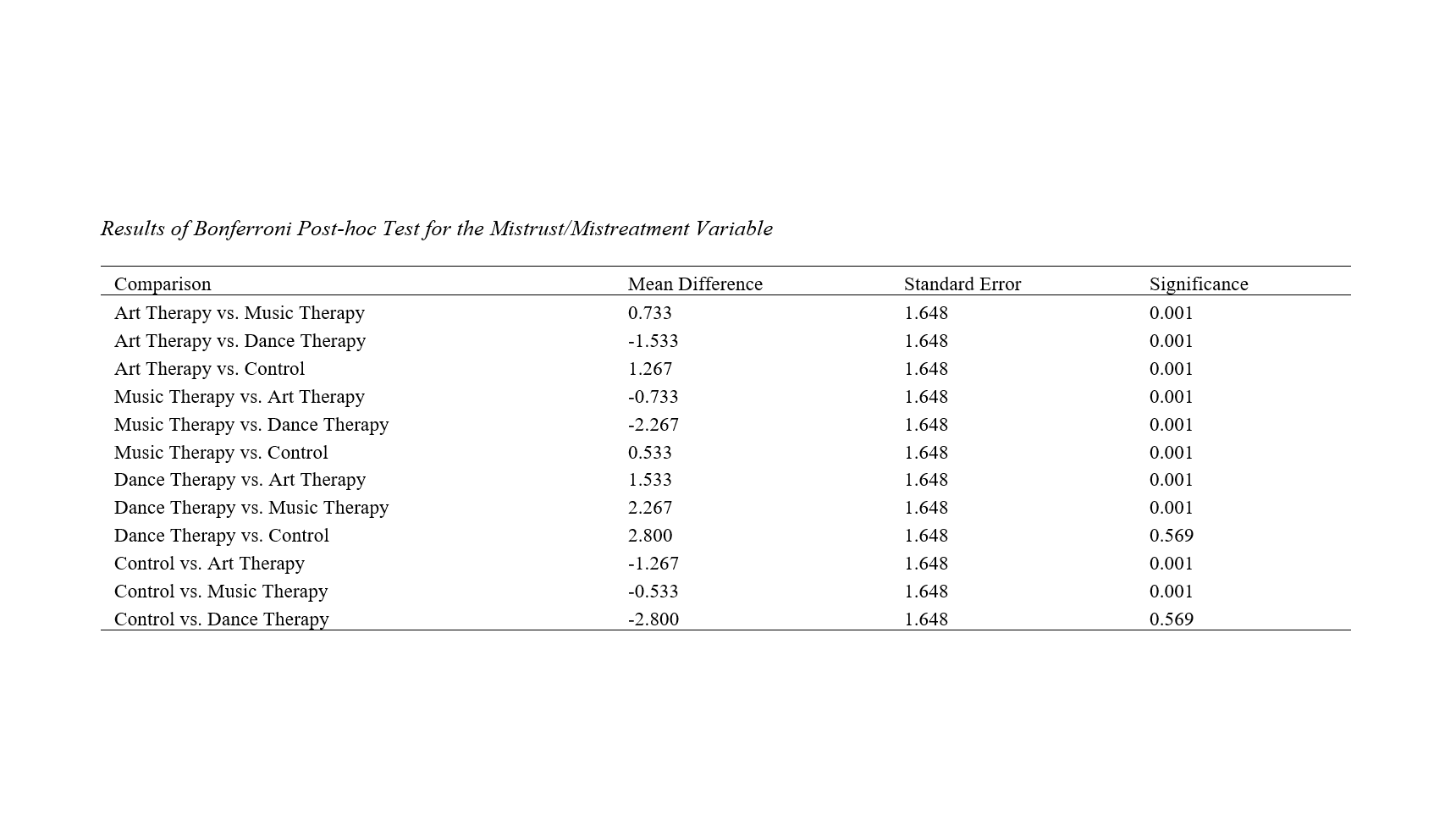Comparing the Effectiveness of Music Therapy, Dance Movement, and Art Therapy on the Mistrust/Mistreatment Schema in Women with Symptoms of Depression Aged 20-30
Keywords:
Mistrust/Mistreatment Schema, Music Therapy, Art Therapy, Dance MovementAbstract
Objective: The present study aimed to compare the impact of music therapy, dance movement, and art therapy on the mistrust/mistreatment schema among women aged 20 to 30 with symptoms of depression visiting counseling centers in Tehran.
Method: This research is applied in purpose and quasi-experimental in method, employing a pre-test - post-test design. The population consisted of all women aged 20 to 30 with symptoms of depression who visited four counseling centers in Tehran, among whom 60 eligible individuals were purposively selected and randomly assigned to four groups (three experimental and one control). Interventions based on the therapeutic protocol (music therapy and dance movement, art therapy) were conducted in eight sessions for the experimental groups, while the control group received no intervention. To test the hypotheses, the Young Schema Questionnaire (1988) (short form of 90 questions) was used. Descriptive and inferential statistical indices, including the covariance test, were utilized for data analysis.
Findings: The results showed no significant differences in the effectiveness of music therapy, art therapy, and dance therapy on the mistrust/mistreatment schema among women aged 20 to 30 with symptoms of depression visiting counseling centers in Tehran (p = 0.000).
Conclusion: It can be concluded that since all three methods of music therapy, art therapy, and dance movement are forms of art therapy, they all affect the mistrust/mistreatment schema, and there is no significant difference in their effectiveness.
Downloads

Downloads
Additional Files
Published
Issue
Section
License

This work is licensed under a Creative Commons Attribution-NonCommercial 4.0 International License.





















